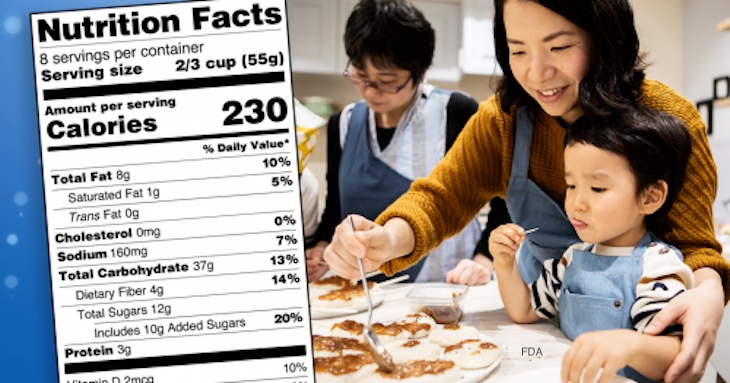With more people cooking at home since restaurants are closed for the coronavirus pandemic, the FDA is offering information about the nutrition facts label to help you learn more about the foods you buy. Many people haven’t look at a nutrition label in a while, so it’s good to be informed.

There are several labels on foods. Those labels are important for several reasons. First of all, it’s where the potential allergens that ma be in the food are listed. You’ll also find the calorie count per serving: this is important, since many people don’t realize how many servings is actually in each container of food.
In the new nutrition facts label, the calorie count is displayed in larger, bolder font. Some serving sizes are updated to better reflect what people actually eat and drink. (Do you really only eat 1/2 cup of ice cream at a time?) Added sugars, vitamin D content, and potassium content are now listed.
In addition, daily values for critical nutrient have been updated. The percent Daily Value (%DV) shows how much nutrient in a serving of that food contributes to your total daily diet.
As you plan meals, choose foods that are higher in these nutrients: dietary fiber, vitamin D, calcium, iron, and potassium. And avoid foods that are higher in saturated fat, sodium, and added sugars.
Calories are the total number of calories supplied from all sources in one serving. Two thousand calories a day is the number to shoot for. Your needs may be higher or lower based on age, sex, height, and physical activity level.
Sodium intake is where a lot of people go off track. The most sodium you should consume in one day is 2,300 mg, about the amount in 1 teaspoon of salt. But many people consume twice that amount, since processed and restaurant food is very high in sodium. If you want to reduce your sodium intake, look for the words “light,” “low sodium,” “reduced sodium” or “no salt” on packaged foods.
The Daily Value for added sugars is up to 50 grams per day. The label shows the amount in grams and the % Daily Value.
Finally, the Daily Value for fiber is 28 grams per day, based on a 2,000 calorie diet. Whole grains on the ingredient list is a good clue the food is high in fiber. Look for ingredients such as barley, brown rice, bulgur, oatmeal, rolled oats, quinoa, whole rye, and whole wheat on the label. And choose whole fruits and vegetables when possible.
Image courtesy FDA




